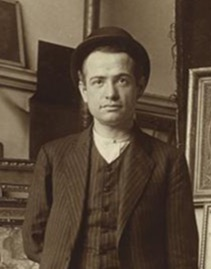
Auguste Herbin
Auguste Herbin (1882-1960) was a French painter and one of the pioneers of abstraction in the early 20th century.
Born in Quiévy, France, Herbin initially trained as a textile designer before turning to painting. He was associated with the Fauvist and Cubist movements in his early career, and his works from this period were characterized by their bright colors, bold brushstrokes, and fragmented forms.
In the 1920s, Herbin began to develop a more abstract style that focused on geometric shapes, flat planes of color, and simplified forms. He was influenced by the work of the Dutch artist Piet Mondrian, and his works from this period were often referred to as "Neo-Plasticism."
Throughout his career, Herbin continued to explore abstraction and geometric forms in his art, and his works were known for their dynamic compositions and use of color. He was also a prolific writer and wrote extensively on the theory of abstraction and the relationship between art and society.
Years:
Born in 1882
Country:
France, Quiévy
Gallery: